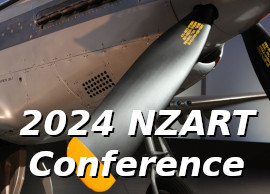Members may be aware that the MED has relaxed the conditions of use for Short Range Devices.The new conditions, which were put in place without any consultation with NZART, permit the use of walkie-talkies, wireless headphones, audio senders, etc., typically featuring very annoying, long duration transmissions in the input band of most of our 70 cm repeaters.
There is also a new allocation at 3.640-4.040 MHz for Auditory Aids which has potential to interfere with amateur signals in the 80 m band.
The previous GURL permitted the same 433.05 - 434.79 MHz frequency range and output power (25 milliwatts e.i.r.p. peak power), but restricted the use to Telemetry and Telecontrol only,modes that typically feature, somewhat annoying, but short duration transmissions.
All of the National System repeaters use input frequencies above 434.79 MHz and are not affected by the GURL change.
NZART was not aware that this change was being considered and the ALO is urgently following the matter up with the MED with a view to getting the 3.5 MHz and 430 MHz changes, which were not discussed with NZART, reversed.
There are a number of problems that Council can foresee, such as these devices creating non-amateur repeater traffic on amateur repeaters, while the transmitting party is using a legal device,
creating a frequency-assignment dilemma for the trustees and the Ministry's technical officers, or an audio sender being interrupted by a repeater user!
If a repeater is interfered with by any devices which have just recently become legal, it is important that you contact your NZART Councillor immediately as well as the Ministry.Repeaters are legal and licensed fixed stations protected from interference by law.
FMTAG has presented some work-arounds if a repeater is constantly interfered with, but the cost and effort involved makes this a last resort step.These changes could also increase the interference caused to these devices.
NZART officers are working to resolve this situation and will be happy to brief members when and if it becomes necessary to take further official action over this issue, or to educate users and retailers about this matter.
The SRD GURL is available on the RSM website at:
http://www.rsm.govt.nz/cms/licensees/types-of-licence/general-user-licences/short-range-devices
You can use the RSM SMART system to see the licensed services in these frequencies.
Select search for a licence, enter the frequency limits (433.05 to 434.79 MHz) and select search. “Amateur Repeater - Mobile Transmit” means it is a repeater input.
NZART Council August 2010

